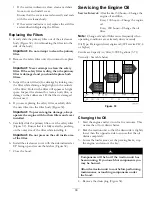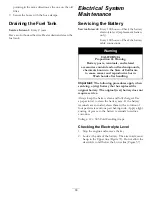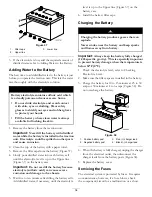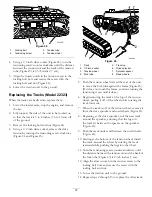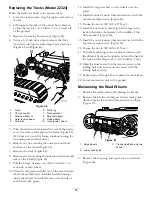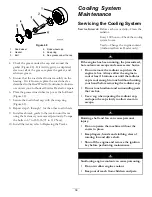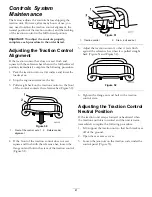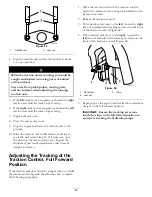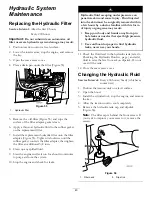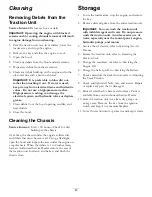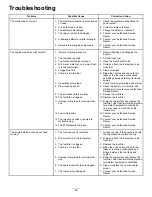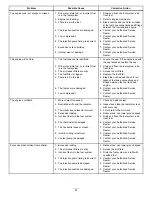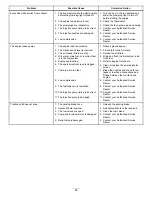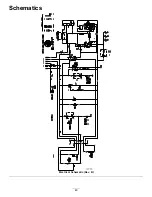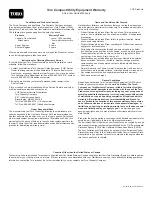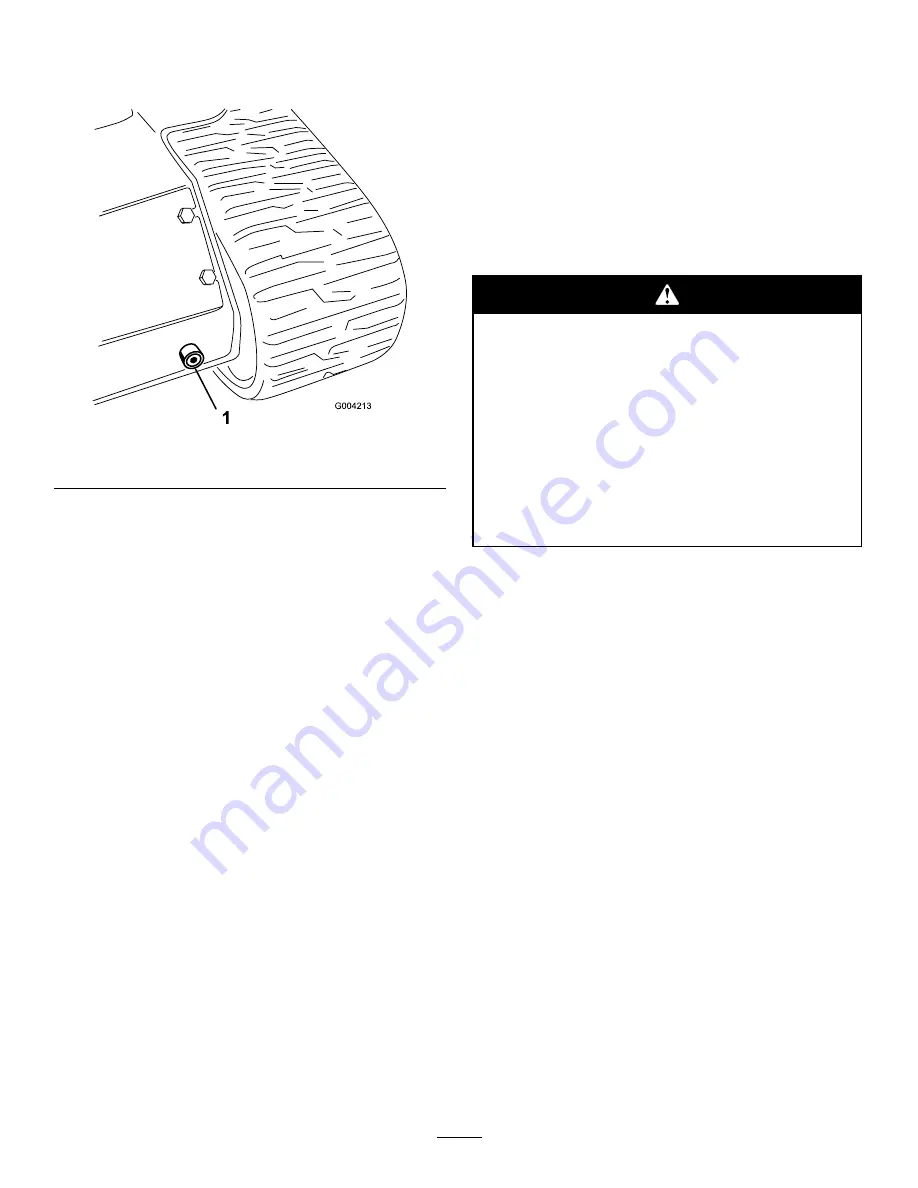
6. Place a large drain pain (capable of holding 15 US
gallons) under the drain plug on the front of the
traction unit (Figure 57).
Figure 57
1.
Drain plug
7. Remove the drain plug and allow the oil to drain into
the pan (Figure 57).
8. When finished, install and tighten the drain plug.
Note:
Dispose of the used oil at a certified recycling
center.
9. Fill the hydraulic tank with approximately 12 US
gallons (45.4 l) of 10W-30 or 15W-40 detergent,
diesel engine oil (API service CH-4 or higher); refer
to Checking Hydraulic Fluid in , page .
10. Start the engine and let it run for a few minutes.
11. Stop the engine.
12. Check the hydraulic fluid level and top it off if
necessary; refer to Checking Hydraulic Fluid in ,
page .
13. Close the hood.
Checking the Hydraulic Lines
Service Interval:
Every 100 hours—Check the
hydraulic lines for leaks, loose
fittings, kinked lines, loose mounting
supports, wear, weather, and chemical
deterioration. (Make necessary
repairs before operating.)
Every 1,500 hours/Every 2 years
(whichever comes first)—Replace all
moving hydraulic hoses.
Hydraulic fluid escaping under pressure can
penetrate skin and cause injury. Fluid injected
into the skin must be surgically removed within
a few hours by a doctor familiar with this form
of injury or gangrene may result.
•
Keep your body and hands away from pin
hole leaks or nozzles that eject high pressure
hydraulic fluid.
•
Use cardboard or paper to find hydraulic
leaks, never use your hands.
44
Summary of Contents for 22319
Page 7: ...Slope Indicator 7...
Page 49: ...Schematics G007388 Electrical Schematic Rev B 49...
Page 50: ...Hydraulic Schematic Rev A 50...
Page 51: ...Notes 51...

